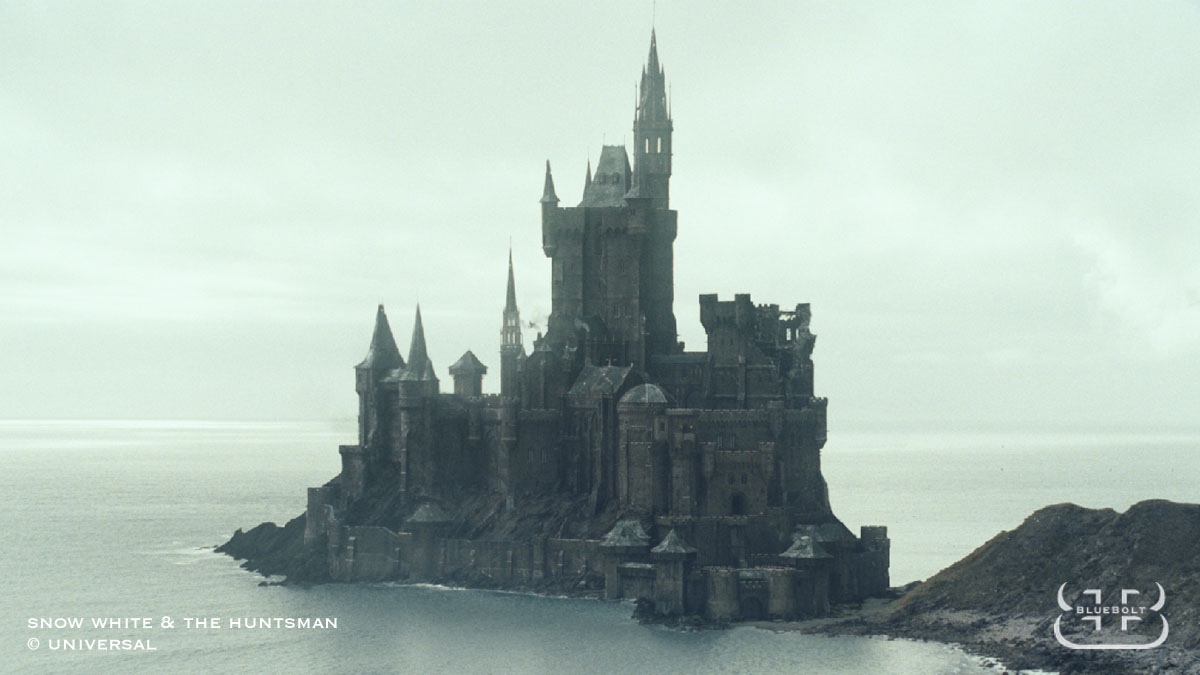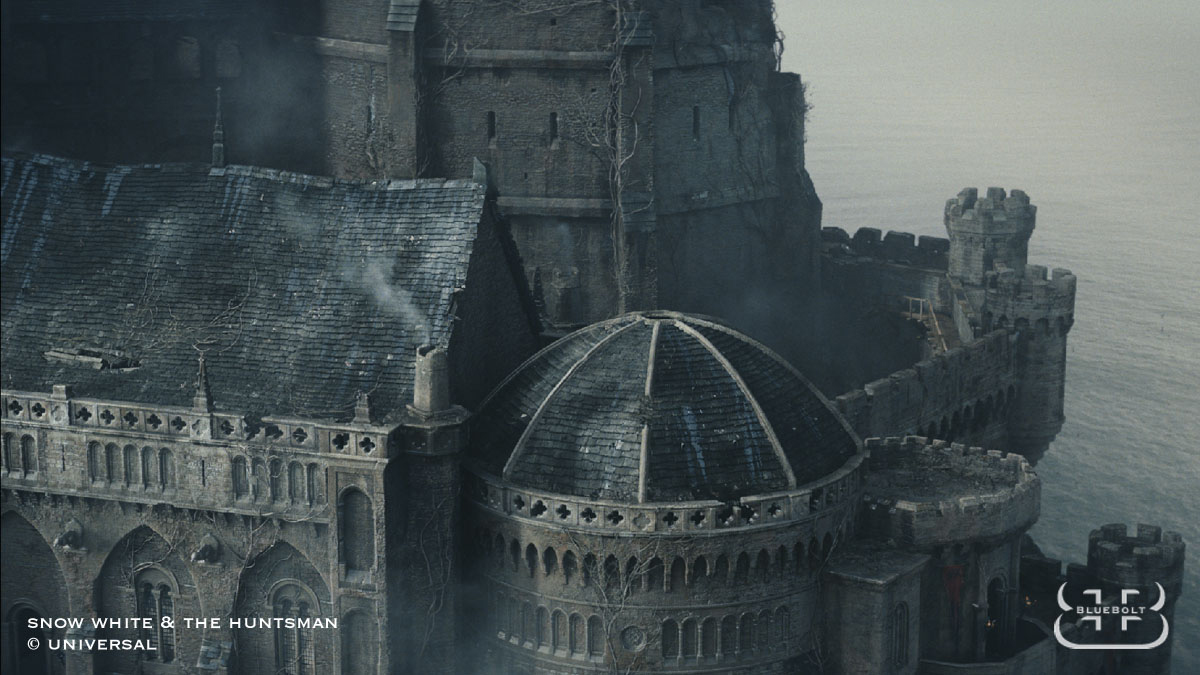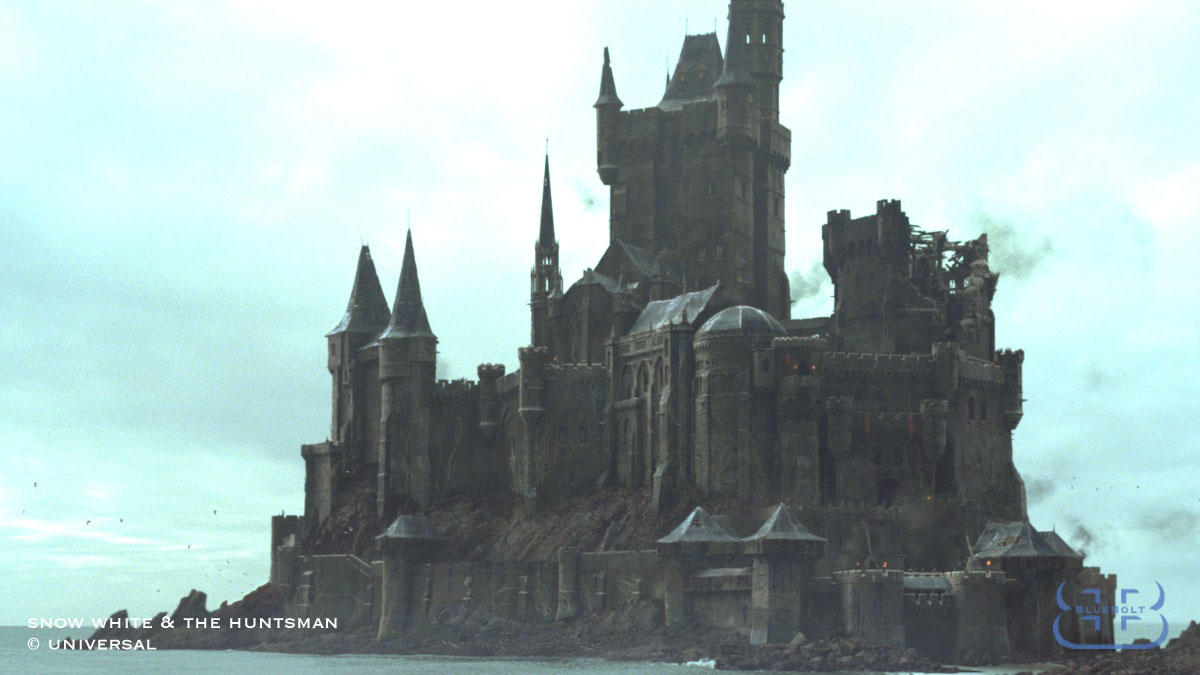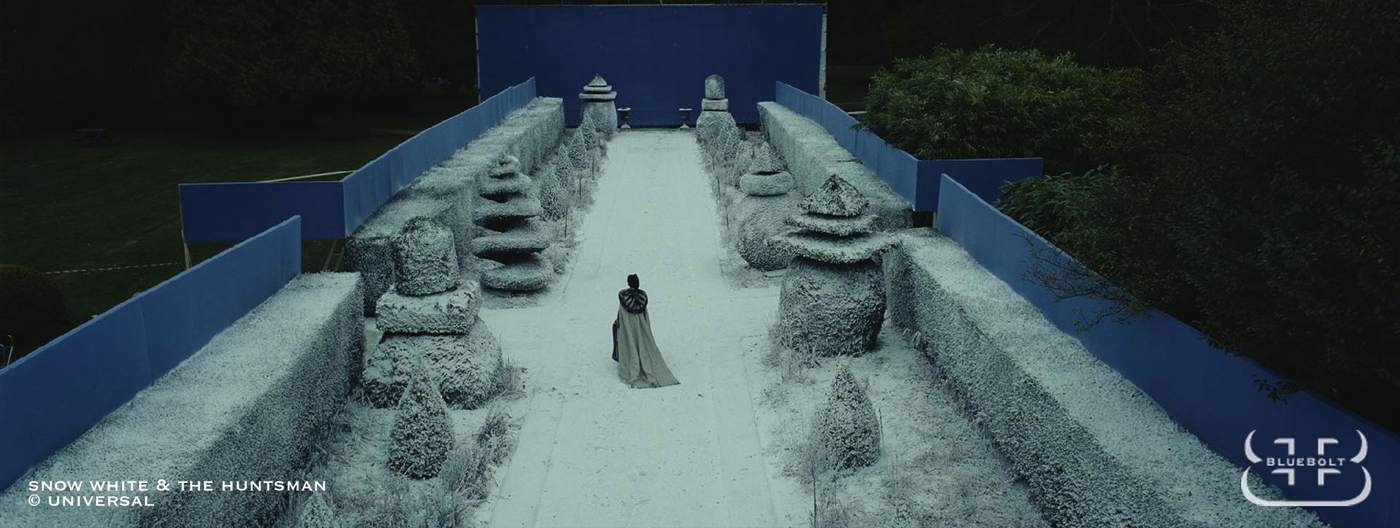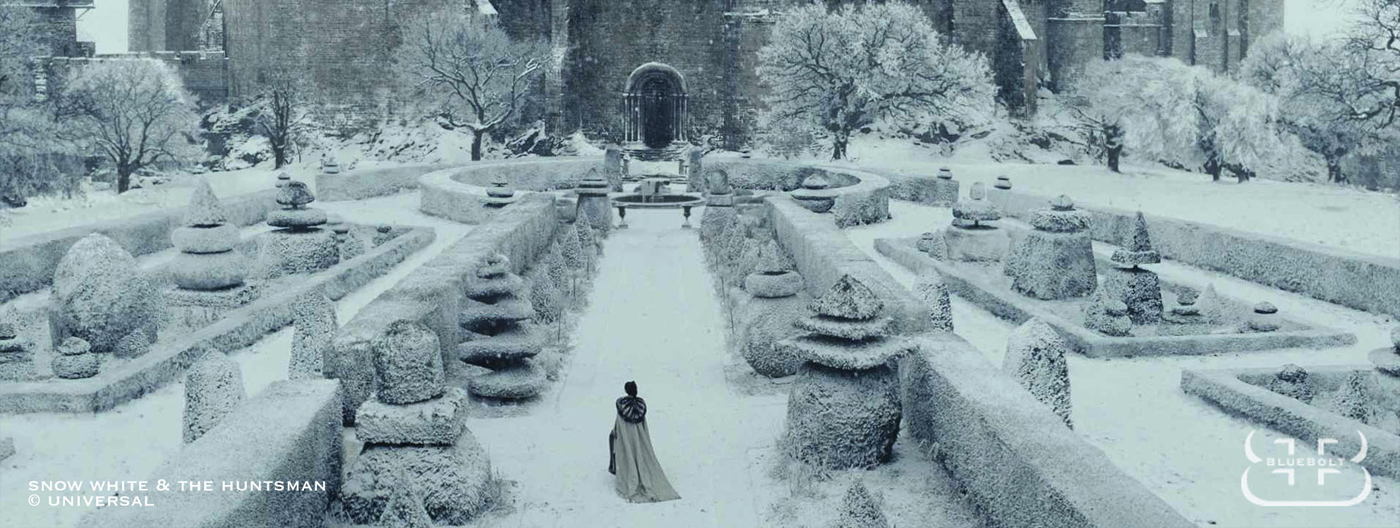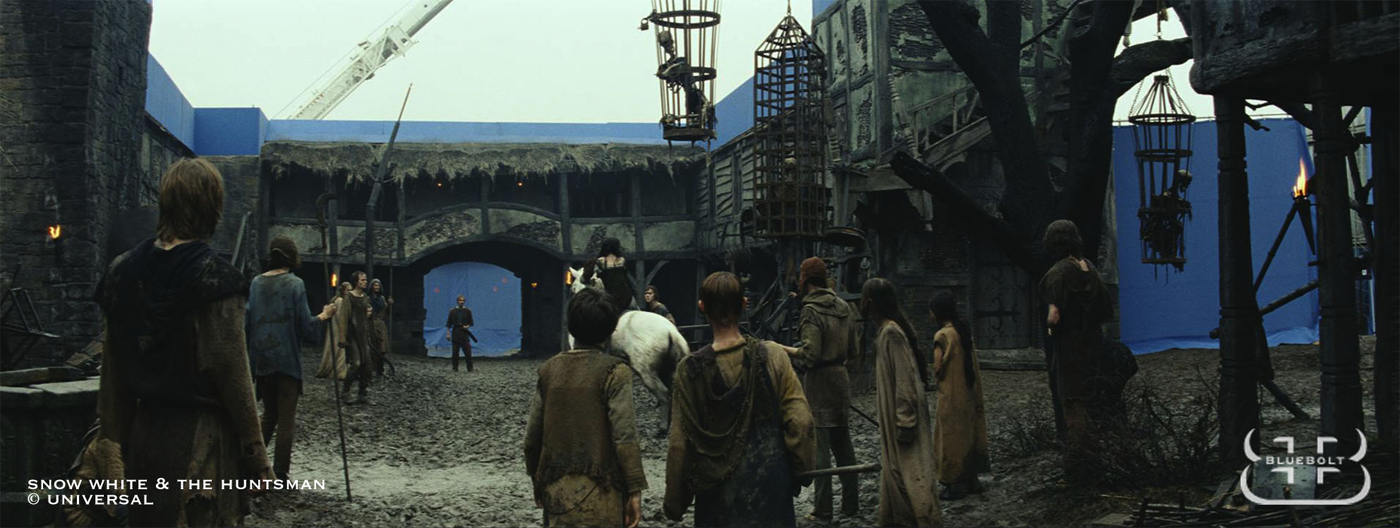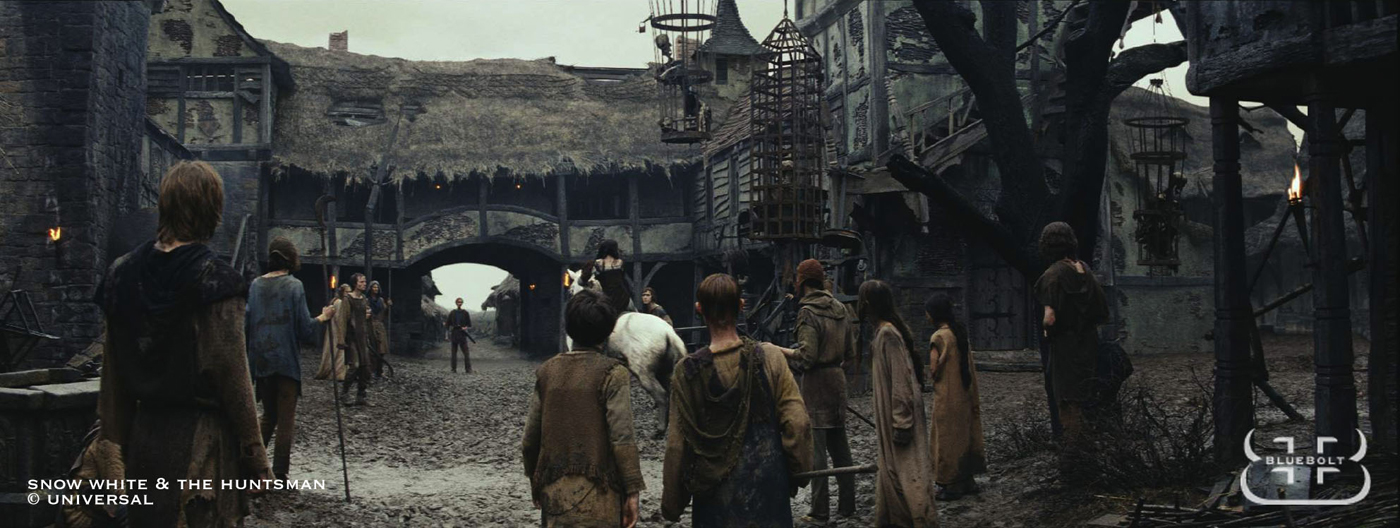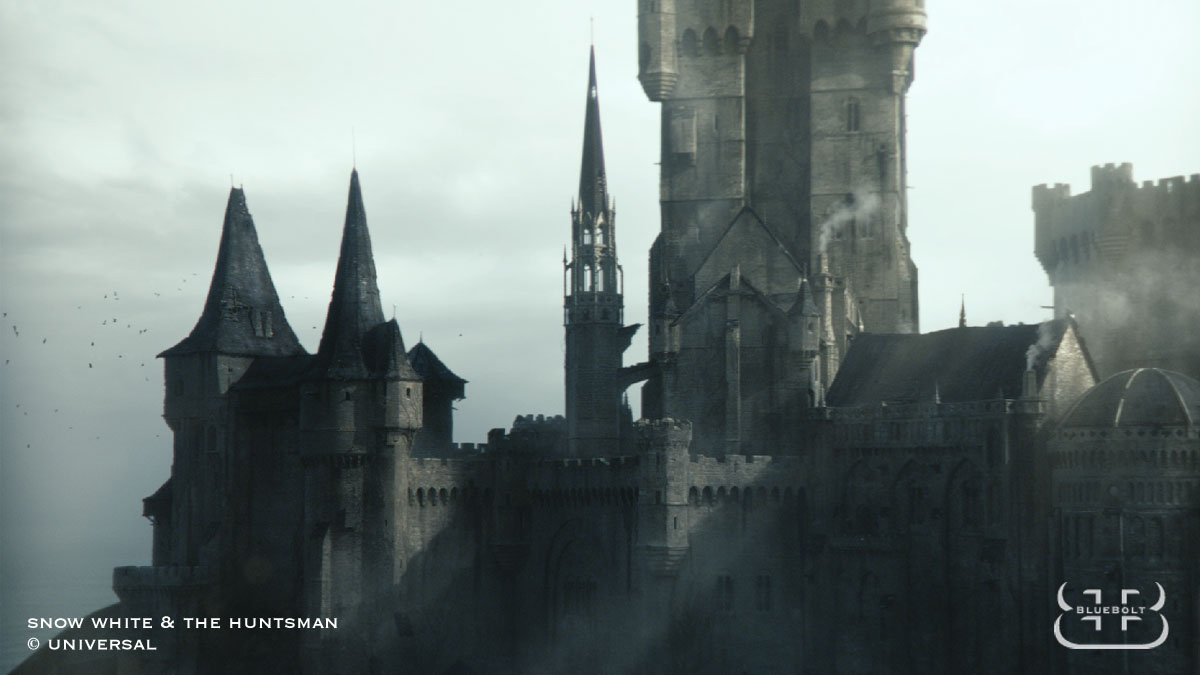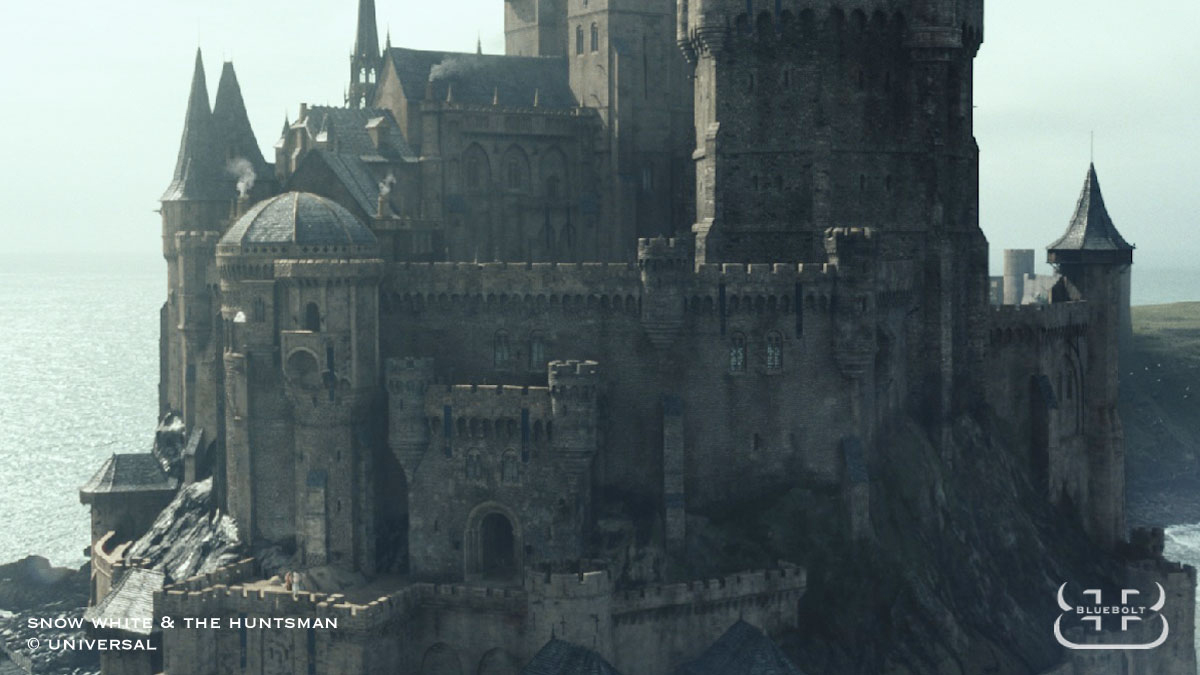Since his last appearance on The Art of VFX for GAME OF THRONES, Angela Barson worked on films like SHERLOCK HOLMES: A GAME OF SHADOWS and THE IRON LADY and also on the TV series GREAT EXPECTATIONS. She talks here about the many challenges for SNOW WHITE AND THE HUNTSMAN.
How did BlueBolt get involved with SNOW WHITE AND THE HUNTSMAN?
Cedric and Phil (the VFX Supervisors) came in to see BlueBolt in London and we showed them our environment work on GAME OF THRONES (season 1). They liked what they saw and not long after they asked us to bid on the castle and royal village work.
When we came on board, shooting had begun but there wasn’t yet an approved design for Snow White’s Castle. We needed to start building it in order to be ready for shot turnover at the end of the year, so we took on the design of the castle as well. When we were getting close to design approval, we sent James Sutton, one of our modelers, up to Pinewood so he could be as close to the clients as possible. He worked on the design for the castle in Maya, making changes immediately for the clients as requested. This really helped speed up the design process.
How different was it working with two instead of one visual effects supervisor?
We mainly worked with Phil throughout the post period, so it wasn’t really different for us. Cedric was always in the background with his comments and suggestions, but most of our feedback came through Phil. During the final weeks of post Phil was based in London, so we dealt directly with him on a daily basis and he had to do all the late night calls with the rest of the production team in LA.
How did you manage to cope with the tight post-production schedule?
The post schedule was very tough. The final sign off on the design of Snow White’s Castle happened about a month later than we’d hoped, which had a big knock on effect to the rest of our schedule. We were getting shots turned over to us in January that required the full CG castle, but the CG castle asset wasn’t complete yet as the design had only just been approved. The castle was such a large CG build, seen in so many different lighting conditions and states of disintegration, that it wasn’t possible to make many shortcuts. The pressure on the BlueBolt team to make up for lost time was immense. As we are a small company, it was a matter of utilizing everyone to the full. Artists would move from modeling, to texturing, to lighting, to dynamics, to compositing – whatever was required. I think the ability of our artists to be flexible and willing to turn their hand to anything, is one of the major strengths of BlueBolt.
In contrast, the design of the Royal Village was known early in the process, so we started the CG build of the royal village while the shoot was underway. By the time we were given shots to work on, we almost had a fully built and textured CG village. On the whole, the village shots went through very smoothly.
Our shot count also increased dramatically, from around 50 shots to 150 shots, and there were almost no quick and easy shots in amongst that. It was critical that we worked in a smooth and efficient manner in order to deal with the large workload in such a short post period. It was a very difficult juggling act for our production team, and under the calm guidance of Clare Norman, they did a fantastic job.
What sort of visual research was involved?
The team gathered a lot of images of castles in different lighting conditions. Getting the level of variation without it looking too busy, especially on the wider shots, was a challenge so we kept referencing real examples that we found and that Phil and Cedric sent to us. The clients were great at sending us visual examples of what they were after rather than just trying to explain it in words, which is always useful when dealing with artists.
What was your biggest challenge and how did you go about creating the solution?
The biggest challenge was creating the CG castle in the short timescale, and making it sure it could be rendered in time. The castle is such a large build and is seen from all possible angles and distances, that the level of detail in the modeling and texturing had to be very high. In some ways that then became the area of difficulty – getting the level of detail high enough for the close ups, but not too high for the wide shots. We textured the village in Photoshop, but when we moved onto the castle texturing it quickly became apparent that the number and size of textures required was too big for a Photoshop pipeline. We made the decision very quickly to move across to using Mari as it was far better at dealing with texturing on this large scale.
The fully CG castle shots were definitely the hardest to achieve. Where there’s something in the shot to match to for look and lighting, it’s always easier to get it right and have everyone in agreement. When it’s all CG it can be open to everyone’s individual interpretation. During the battle sequence on the beach we had many shots where we were adding the fully CG castle. As always happens, the lighting conditions changed quite dramatically between some shots. The backlit, atmospheric plates were much easier to work with than the front lit, clean plates, and there’s always the challenge of trying to introduce a level of consistency between the CG lighting regardless of the variation in the plates.
We added in a lot of additional atmospherics to the CG to stop it looking too clean and therefore CG. Small pockets of smoke, flambeaux, birds, sea mist, vegetation and people were added to bring the castle to life and give it a sense of scale.
What sort of set extensions and augmentation were you responsible for?
We were responsible for all the set extensions of the royal village in both the Magnus and Ravenna reign. This involved topping up the central houses as well as adding fully CG houses to extend the area.
We also did set extensions to Snow White’s Castle courtyard that was built as a set piece at Pinewood Studios. The plates for the main wide castle shots were filmed out in Wales where no practical build existed, so we built a full CG version of Snow White’s Castle in both the Magnus and Ravenna reigns. The number and complexity of the fully CG castle shots was far higher than we had initially imagined, but it was a great challenge and we have some fantastic shots as a result.
What was involved in seamlessly making set extensions and augmentation?
We started by getting a lidar scan of the set so that we could match our CG extension exactly. We also did an extensive texture shoot of the set to use as a basis for our CG textures. This had to be done twice for each set build as they were dressed differently for the Magnus and Ravenna reigns. We built the nice Magnus reign first, then added all the destruction for Ravenna as a second pass.
Creating the run-down Ravenna version involved destroying walls and roofs, adding additional staining to walls, having vines growing around the castle, blackening any timber and generally making it look more charred and neglected. This type of CG environment work is always fun to do.
How did you maintain a balance between the gritty realism and the fantasy elements?
The key was keeping the design and the scale of the detail realistic. Even though the castle is enormous, it is designed in a way that is structurally sound with a sensible scale to the stone blocks. The scale of features like doors, windows and buttresses are correct, and there is a lot of smaller detailing like vents in the roofs and timber struts to break up large surfaces.
We added lots of subtle variation to the stonework, as it could never have been built all from the same stone type in a short space of time. Staining was added to make it look as though it had been standing for many years and to give it an extra sense of realism. It’s the addition of all this subtler detail that helps keep it looking real.
Is there anything you would like to add?
Our challenge with this project was the scale of the 3D builds with such a short lead followed by a very short post schedule. The clients were great and the shots we were awarded were fantastic and the team at BlueBolt led by Henry Badgett and Raf Morant did a phenomenal job to produce such great looking work under huge pressure.
A big thanks for your time.
// WANT TO KNOW MORE?
– BlueBolt: Dedicated page about SNOW WHITE AND THE HUNTSMAN on BlueBolt website.
© Vincent Frei – The Art of VFX – 2012


